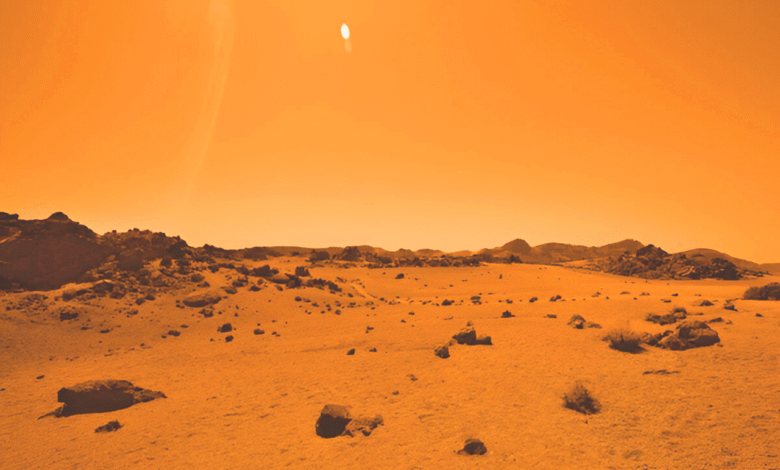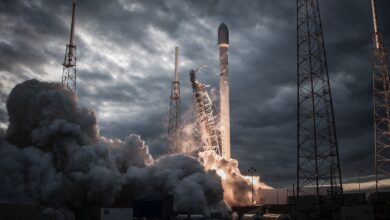The Strangest Planets We’ve Discovered (So Far)
Explore the strangest planets discovered from molten iron rain to diamond worlds revealing the universe's most bizarre and extreme exoplanets.

The universe is filled with bizarre exoplanets that defy our understanding of planetary science. From worlds that rain molten glass to Strangest Planets made of solid diamond, these discoveries push the boundaries of what we thought possible. Astronomers have uncovered extreme environments scorching hot gas giants, frozen super-Earths, and even planets with double sunsets each more fascinating than the last. As technology advances, we continue to find strange and mysterious worlds that challenge our perception of the cosmos.
The search for alien Strangest Planets has revealed some truly unusual celestial bodies, some so extreme they seem like science fiction. Whether it’s a pitch-black planet darker than coal or a water world with oceans of superheated fluid, these discoveries expand our knowledge of planetary diversity. Each new exoplanet found brings us closer to answering the ultimate question: Are we alone in the universe? The strangest planets we’ve discovered so far are just the beginning of an endless cosmic mystery.
The Strangest Planets We’ve Discovered (So Far)
HD 189733 b
One of the most extreme Strangest Planets ever found, HD 189733 b, is a gas giant located 63 light-years away. What makes this planet truly bizarre is its weather winds blow at 5,400 mph (8,700 km/h), carrying molten glass rain sideways. The planet’s deep blue hue comes from silicate particles in its atmosphere, which scatter light in a way similar to Earth’s oceans. With surface temperatures reaching 1,700°F (930°C), this world is anything but hospitable.
55 Cancri e
Imagine a planet made largely of diamond—55 Cancri e is exactly that. This super-Earth, twice the size of our planet, orbits so close to its star that a year lasts just 18 hours. Scientists believe its carbon-rich composition has crystallized into diamond and graphite under extreme pressure. With surface temperatures exceeding 4,000°F (2,200°C), this glittering world is one of the most valuable planets in the galaxy—if only we could mine it.
WASP-12b
WASP-12b is a doomed planet slowly being eaten alive by its host star. This hot Jupiter orbits so close to its sun that it’s stretched into an egg shape by gravitational forces. The star’s intense heat is tearing away its atmosphere at a rate of 189 quadrillion tons per year. In a few million years, this planet will be completely destroyed, offering astronomers a rare glimpse into planetary death.
Kepler-16b
Fans of Star Wars will recognize Kepler-16b as a real-life Tatooine a planet that orbits two suns. Located about 200 light-years away, this gas giant experiences double sunsets and sunrises. Though too cold for life, its discovery proved that circumbinary planets (worlds orbiting two stars) are possible, opening new avenues in the search for habitable exoplanets.
GJ 1214 b
GJ 1214 b is a steamy, ocean-covered planet with no land in sight. This super-Earth is entirely enveloped in a thick, watery atmosphere, possibly hiding a deep, global ocean beneath. The intense pressure and heat create Exotic matter of ice, like hot ice or superfluid water, making it one of the most Strangest Planets ever discovered.
TrES-2b
TrES-2b is the darkest exoplanet ever found, reflecting less than 1% of the light that hits it. This Jupiter-sized world is blacker than coal, with an atmosphere so hot it emits a faint red glow. Scientists believe its extreme darkness comes from light-absorbing chemicals like vaporized sodium and potassium, making it a mysterious, shadowy world.
PSR J1719-1438 b
Another diamond planet, PSR J1719-1438 b, was once a massive star before collapsing into a super-dense crystalline structure. Orbiting a pulsar, this planet is likely the remnant core of a white dwarf, compressed into solid diamond. With a density greater than any known planet, it’s one of the most unique Strangest Planets in the cosmos.
OGLE-2005-BLG-390Lb
Dubbed Hoth (after the icy Star Wars planet), OGLE-2005-BLG-390Lb is a frozen wasteland with surface temperatures around -364°F (-220°C). This super-Earth orbits far from its dim star, making it one of the coldest known planets. Its discovery proved that Earth-sized planets could exist in extremely frigid conditions.
KELT-9b
Stellar Proximity Creates Extreme Heat
Orbiting just 3 million miles from its blue supergiant host star, KELT-9b endures daytime temperatures of 7,800°F (4,300°C) – hotter than most stars. Its 3.5-day orbit subjects the planet to brutal radiation that strips away its atmosphere at 10 million tons per second.
A Planet Stretched to Its Limits
The star’s intense heat has inflated KELT-9b into an ultra-puffed gas giant, while gravitational forces stretch it into a football shape. Molecules like water and carbon dioxide can’t form in its upper atmosphere, breaking all known chemical rules for Strangest Planets.
A Glowing, Evaporating World
KELT-9b’s atmosphere contains ionized iron and titanium, creating a glowing metallic vapor trail detectable from 650 light-years away. Scientists predict this doomed planet will completely evaporate within 200 million years, leaving behind just a scorched core.
Gliese 436 b
Defying Planetary Logic
Gliese 436 b presents one of the most paradoxical environments ever discovered. Despite surface temperatures reaching a scorching 800°F (427°C), this Neptune-sized exoplanet maintains a layer of solid ice.
The Science Behind Hot Ice
The planet’s immense gravitational pressure (thousands of times stronger than Earth’s) compresses water molecules into an exotic state called “ice X” a crystalline form that remains solid even at extreme temperatures.
A Steamy Hydrogen Atmosphere
Gliese 436 b’s hydrogen-rich envelope is slowly evaporating under stellar radiation, creating a comet-like tail. This process leaves behind a super-dense core wrapped in a shroud of vaporized gas.
Orbital Oddities
Unlike most Strangest Planets, Gliese 436 b follows an eccentric, polar orbit around its red dwarf star, completing a revolution every 2.6 Earth days while enduring brutal stellar flares.
A Cosmic Pressure Cooker
The combination of searing heat, crushing gravity, and exotic matter states makes this world a natural laboratory for studying extreme planetary physics beyond our solar system.
The Future of Exploration
Astronomers consider Gliese 436 b a prime candidate for James Webb Space Telescope observations, which may reveal more about its bizarre atmospheric chemistry and interior structure.
Read More: What If the Earth Stopped Spinning? (A Bizarre Thought Experiment)
Conclusion
Our exploration of the cosmos continues to reveal bizarre exoplanets that challenge everything we know about planetary formation. From diamond-rich worlds to Strangest Planets with eternal molten glass storms, these discoveries prove the universe is far stranger than we imagined. Each new finding pushes the boundaries of astronomy, reminding us how much remains to be discovered in the vast expanse of space.
As technology advances, we’ll undoubtedly uncover even more unusual celestial bodies, some of which may redefine the very concept of a planet. These strange and mysterious worlds not only expand our scientific knowledge but also fuel our curiosity about what other wonders or even life might exist beyond our solar system. The search for the Strangest Planets is far from over, and the cosmos still holds countless surprises waiting to be found.
What is the most extreme exoplanet discovered?
HD 189733 b ranks among the most extreme, with 5,400 mph winds and molten glass rain blowing sideways.
Are there really Strangest Planets made of diamond?
Yes, 55 Cancri e and PSR J1719-1438 b are believed to contain massive amounts of crystallized diamond in their composition.
Can a planet orbit two suns like in Star Wars?
Absolutely Kepler-16b is a real-life Tatooine, orbiting two stars and experiencing double sunrises and sunsets.
Which Strangest Planets is the darkest ever found?
TrES-2b holds this record, reflecting less than 1% of light darker than coal due to its light-absorbing atmosphere.
Is there a Strangest Planets where ice burns?
Gliese 436 b defies logic with its burning ice, where extreme pressure keeps water solid despite 800°F (427°C) surface heat.











